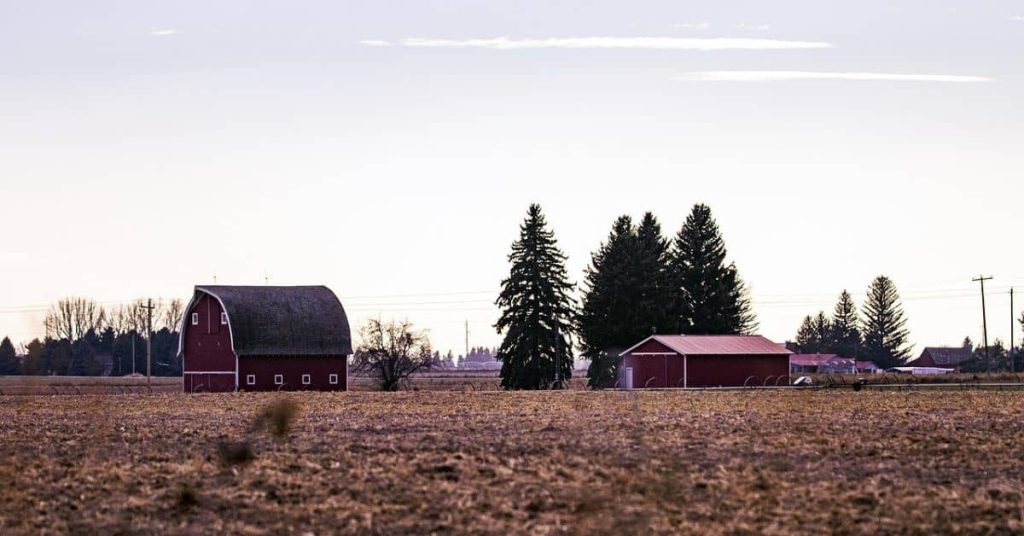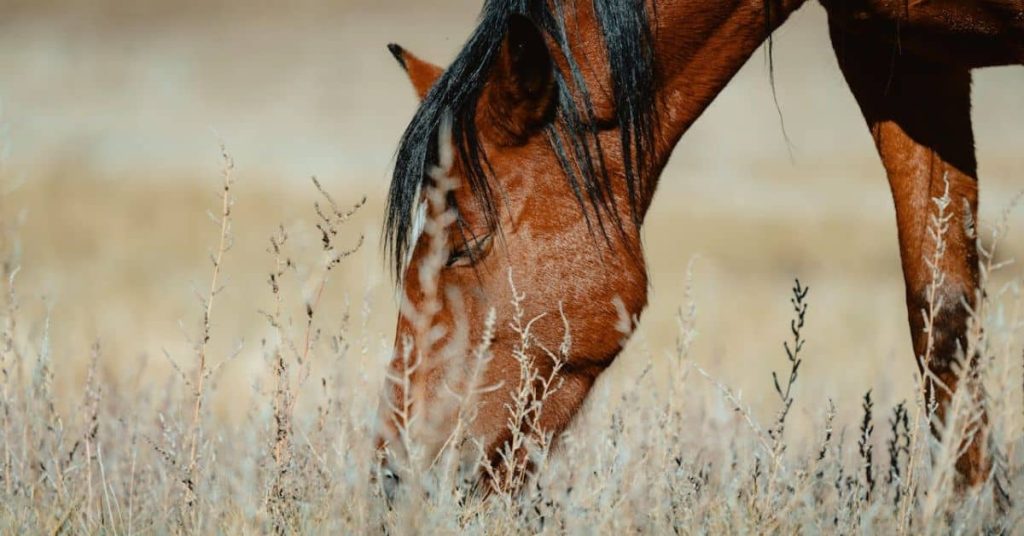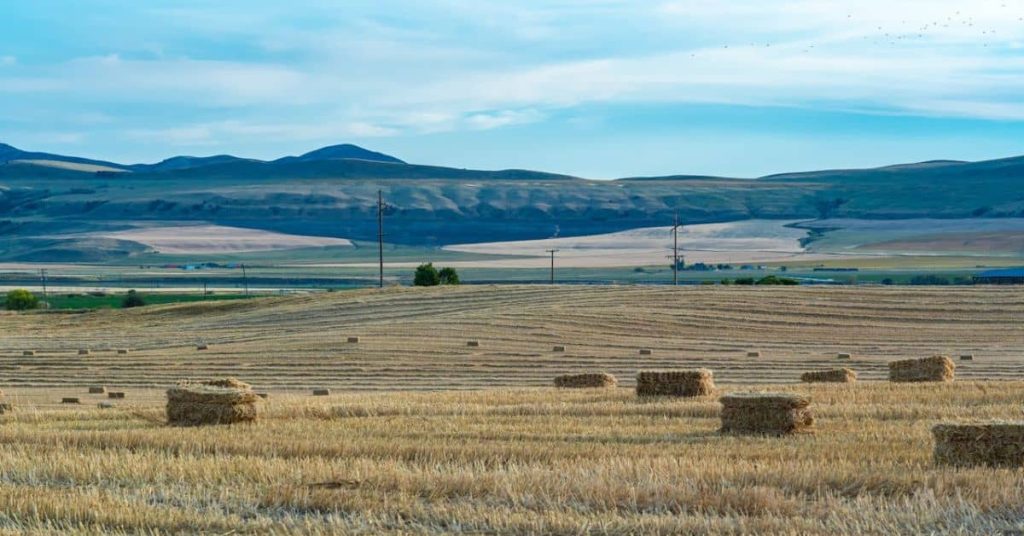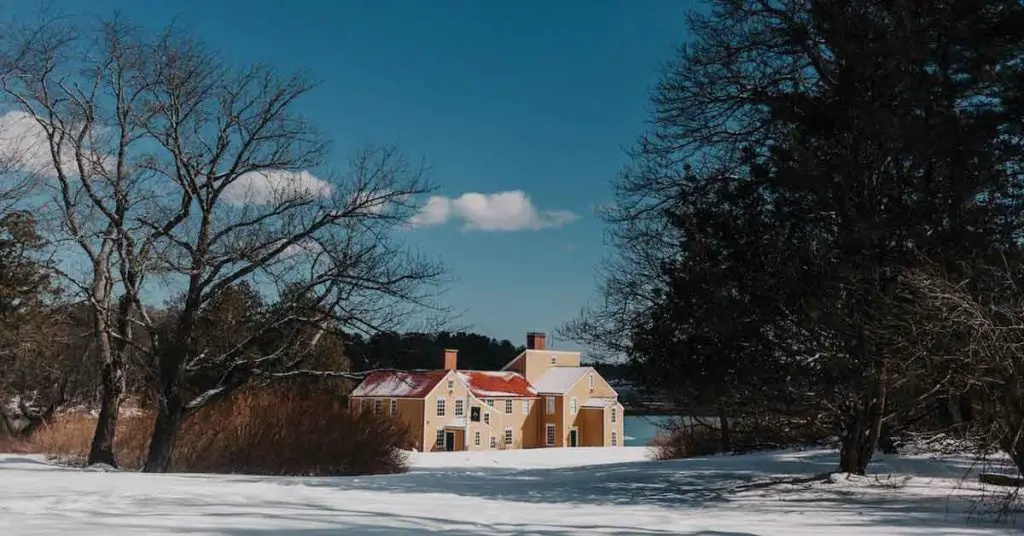Introduction to Homesteading in Idaho
There’s something deeply appealing about carving out a life of self-reliance under Idaho’s vast skies — a place where homesteaders find both challenge and freedom in equal measure. Whether you’re drawn to the promise of wide-open land, eager to grow your own food, or dreaming of raising animals on your own terms, homesteading in Idaho offers an incredible opportunity to build a life rooted in simplicity, resilience, and connection to nature.
But make no mistake — homesteading here is no small feat. From navigating Idaho’s unique climate and rugged terrain to understanding its land laws and choosing the right crops or livestock, success hinges on preparation and local know-how. That’s where this guide comes in.
In this article, we’ll walk you through everything you need to know to thrive on an Idaho homestead — from finding the right land and understanding legal requirements, to practical tips for building, farming, living off-grid, and joining the vibrant homesteading community here. Whether you’re a curious beginner or ready to go all in, this guide is designed to help you make smart decisions, avoid common pitfalls, and embrace the rewarding journey of homesteading in Idaho with confidence.
Ready to dig in? Let’s get started.
Why Idaho Is a Top Choice for Homesteading
When people think about building a self-reliant, sustainable life, Idaho consistently pops up as a favorite — and for good reason. Whether you’re dreaming of raising chickens, growing your own food, or just stepping away from the noise of urban life, homesteading in Idaho offers a unique combination of opportunity, freedom, and beauty that’s hard to match. Let’s break down why this rugged western state is so appealing for modern homesteaders.
Is Idaho a Good State to Homestead?
Absolutely — and it’s not just the die-hard back-to-the-landers who say so. Idaho consistently ranks as one of the most homesteader-friendly states in the country. It offers relatively minimal government restrictions compared to more regulated areas, especially when it comes to things like raising animals, building off-grid, or using alternative energy. Rural communities here are often supportive of homesteaders, and the state’s strong agricultural history means you’ll find neighbors who understand — and even admire — the homesteading lifestyle.
For those looking to reconnect with their food, their land, or their community, Idaho offers the rare chance to do it all in one place.
Climate, Soil, and Natural Resources
Idaho’s climate is diverse — from the cold, snowy mountains of the north to the more temperate southern valleys. This means you can tailor your homestead to fit your goals. The rich volcanic soils of southern Idaho are ideal for growing crops like potatoes, wheat, and barley, while the northern forests provide ample opportunity for timber, hunting, and foraging.
Water is another huge advantage. Idaho is home to numerous rivers, lakes, and aquifers, and irrigation rights can make a major difference in how productive your land is. That said, learning about local water laws and managing water wisely are essential skills for any Idaho homesteader.
Affordable Land and Cost of Living
Compared to many western states like Colorado or California, Idaho offers significantly more affordable land — a huge draw for new homesteaders. In rural counties, it’s still possible to find acreage at a price that won’t break the bank, whether you’re looking for pastureland, forest, or farmland.
Beyond just the price of land, Idaho’s overall cost of living tends to be lower, which can help stretch your homesteading budget further. Property taxes are generally reasonable, and the state has no sales tax on groceries, which adds up when you’re stocking a pantry or feeding a family.
Personal insight tip: Many experienced Idaho homesteaders recommend visiting different parts of the state before buying land. Spend time in both southern and northern Idaho to get a feel for the land, climate, and community that’s the right fit for your family and goals. What looks good on paper can feel very different once your boots are on the ground!
Understanding Idaho Homesteading Laws

Before you stake your claim and start planting gardens or building a chicken coop, it’s essential to understand the legal landscape of homesteading in Idaho. While Idaho is generally welcoming to homesteaders, knowing the local rules and regulations can save you major headaches down the road. Let’s break it down so you can move forward with confidence.
What Are the Rules for Homesteading in Idaho?
In Idaho, “homesteading” isn’t just a romantic notion — it’s a legal framework rooted in property rights, land use, and sometimes even tax benefits. The Idaho Homestead Exemption allows homeowners to protect a portion of their property’s value (currently up to $175,000) from creditors, which is a big help for those aiming to build long-term security.
When it comes to land use, most counties have fairly relaxed rules in rural areas, allowing for livestock, small-scale farming, and off-grid living. That said, always check your county’s zoning ordinances before buying land to ensure your plans (like adding tiny homes, drilling a well, or raising goats) fit within local guidelines.
Can You Claim Land in Idaho?
The days of simply staking a claim and calling it yours are long gone, but that doesn’t mean there aren’t creative pathways to land ownership. Idaho follows adverse possession laws, which in rare cases allow people to claim ownership of land they’ve openly occupied for a set number of years — usually seven or more — but this is a lengthy legal process with no guarantees.
More practically, if you’re interested in affordable land, keep an eye on tax-delinquent properties or foreclosure auctions, which are sometimes overlooked gems for homesteaders on a budget.
Is There Still Free Land to Homestead?
While Idaho no longer offers formal “free land” like the homestead acts of the 19th century, some small towns and rural counties occasionally run programs to attract new residents, sometimes offering discounted or incentive-based lots. It’s rare but worth investigating.
Additionally, keep an eye on abandoned homesteads and tax-delinquent properties, which sometimes come up at county tax auctions. While they’re not technically free, they can be a bargain compared to conventional land sales. Be prepared to invest in cleanup or legal fees and always do a title search before purchasing.
Permits, Zoning, and Water Rights
One of the most important — and often overlooked — parts of homesteading in Idaho is understanding local permits and water rights.
- Permits: Depending on your county, you may need permits for wells, septic systems, electrical hookups, or large outbuildings. Even if you’re planning an off-grid homestead, it’s wise to check what’s required to avoid fines or legal issues.
- Zoning: Idaho has a wide mix of zoning rules, with rural areas typically being more flexible. Agricultural zoning is often the best fit for homesteaders but confirm before you buy.
- Water Rights: Perhaps most critically, Idaho has a long history of water use laws. Owning land doesn’t automatically mean you can use nearby water sources. Make sure to research existing water rights tied to the property — they’re often sold or leased separately.
Personal insight tip: Connect with your local county extension office or planning department early on. Not only can they explain local rules, but they often know about under-the-radar programs, grants, or land opportunities for new homesteaders.
Finding and Buying Land in Idaho

When it comes to homesteading in Idaho, finding the right piece of land is half the adventure — and half the challenge. From the mountains of northern Idaho to the plains of the south, the Gem State offers a diverse range of options for aspiring homesteaders. The key is knowing where to look, how to assess what you’re buying, and understanding what you’re really signing up for.
Best Regions and Counties for Homesteading
Idaho is a state of contrasts, and where you choose to settle will shape your homesteading experience.
- Northern Idaho (Bonner, Boundary, and Kootenai Counties): Known for its dense forests, abundant wildlife, and relatively mild summers, northern Idaho appeals to those craving a remote, wilderness feel. It’s ideal for timber, small livestock, and off-grid living.
- Central Idaho (Idaho and Valley Counties): Rugged and mountainous, central Idaho offers stunning scenery but a shorter growing season. It’s great for hunting, foraging, and hardy crops, but be ready for snow.
- Southern Idaho (Canyon, Owyhee, and Twin Falls Counties): This region features larger agricultural valleys, a longer growing season, and more sunshine. It’s often more accessible and better suited for larger-scale gardening, orchards, and livestock.
A great tip: Spend time visiting these areas before buying. Chat with locals, visit farmers’ markets, and get a feel for the climate and community.
Homesteading Land for Sale vs. Free Land Opportunities
While you won’t find homesteading “free land” like in the days of the Homestead Act, Idaho still offers some creative pathways:
- Land for Sale: Start with real estate websites, but don’t stop there. Check local newspapers, community boards, and word of mouth — sometimes the best deals aren’t listed online. Agricultural land is often more affordable per acre than residential plots, especially if you’re okay with raw, undeveloped land.
- Free Land Opportunities: Some small Idaho towns occasionally offer discounted or incentive-based land programs to encourage development. While rare, they do pop up, so keep an eye on local government websites and news outlets.
Personal insight: Always walk the property, talk to neighboring landowners, and research county records. What looks great online may hide access issues, easements, or zoning restrictions.
How to Evaluate Abandoned Properties and Restoration Potential
Abandoned homesteads and tax-delinquent properties can be tempting, especially for those on a tight budget, but they require careful evaluation.
- Check the land records: Visit the county clerk or recorder’s office to review the title and make sure there are no unresolved liens or ownership disputes.
- Assess the infrastructure: Look at existing buildings, fences, wells, and septic systems. Are they salvageable, or will you need to start over? Bringing in a contractor for a walk-through can save you costly surprises.
- Consider restoration costs: Calculate your full investment — not just the purchase price but the costs of cleanup, repairs, and bringing utilities (or off-grid systems) online.
- Evaluate the land itself: Test the soil, check water availability, and review sun and wind exposure. An abandoned lot with poor soil or no water rights can quickly turn into a money pit.
Expert tip: Don’t rush the process. Take the time to explore several properties, compare costs, and connect with locals who’ve been through the homesteading journey. Their insights are often worth more than any real estate listing.
Building a Productive Idaho Homestead

Once you’ve found your land, the real magic of homesteading in Idaho begins: turning that property into a thriving, productive homestead. Idaho’s diverse climate, from the cool north to the arid south, offers a range of opportunities for crops, livestock, and even forest management. The key is to work with nature, not against it — and to build gradually as your knowledge and confidence grow.
Best Crops for Idaho’s Climate
Idaho is famous for its potatoes, but its agricultural potential stretches far beyond that.
- Cooler regions (northern and central Idaho): Here, the shorter growing season is perfect for cool-weather crops like kale, spinach, carrots, broccoli, and peas. Hardy fruits like apples, plums, and cherries also do well.
- Warmer regions (southern Idaho): You can extend your growing season and plant heat-loving crops like tomatoes, peppers, corn, squash, and melons.
- Statewide crops: Potatoes, of course, plus beans, onions, garlic, and hardy herbs thrive almost everywhere in Idaho.
Practical tip: Use season-extending techniques like cold frames, low tunnels, and greenhouses to push your planting window, especially in northern zones. Keep a planting calendar specific to your USDA hardiness zone and consider dry farming methods in areas with limited irrigation.
Recommended Livestock for Beginners
Raising animals can take your Idaho homestead to the next level — but it’s wise to start small.
- Chickens: These are the perfect “gateway” livestock, offering eggs, meat, and bug control. They’re resilient in Idaho’s winters with a well-insulated coop.
- Goats: Hardy and adaptable, goats provide milk, meat, and weed control. They handle Idaho’s terrain better than many larger animals.
- Rabbits: For homesteaders short on space, rabbits are an efficient source of lean meat and manure for the garden.
- Bees: A slightly more advanced addition, bees not only give you honey but also boost pollination across your crops.
Personal insight: Get to know your local predator situation (foxes, coyotes, even bears in some areas) and invest early in good fencing. Also, connect with a local veterinarian familiar with homestead-scale livestock.
Forest and Woodlot Management
If your land includes forested areas or a woodlot, you’re sitting on an often-overlooked asset — one that can provide firewood, building material, wildlife habitat, and even food.
- Firewood and timber: Selective harvesting ensures you have a renewable heat and construction source without damaging the ecosystem. Learn proper felling, splitting, and stacking techniques, or take a local workshop.
- Wildlife habitat: Maintaining a mix of mature trees, shrubs, and understory plants supports birds, pollinators, and beneficial predators that help control pests. Avoid clearing all brush or deadwood; these often shelter native species.
- Foraging: Idaho’s forests can offer wild berries, mushrooms (if you’re experienced), and medicinal plants. Always forage ethically — take only what you need, and leave plenty behind to regenerate.
Pro tip: Check with your county extension office or forestry department for guidance on sustainable practices and any available cost-sharing programs for habitat improvement or wildfire prevention.
Off-Grid Living and Energy Options
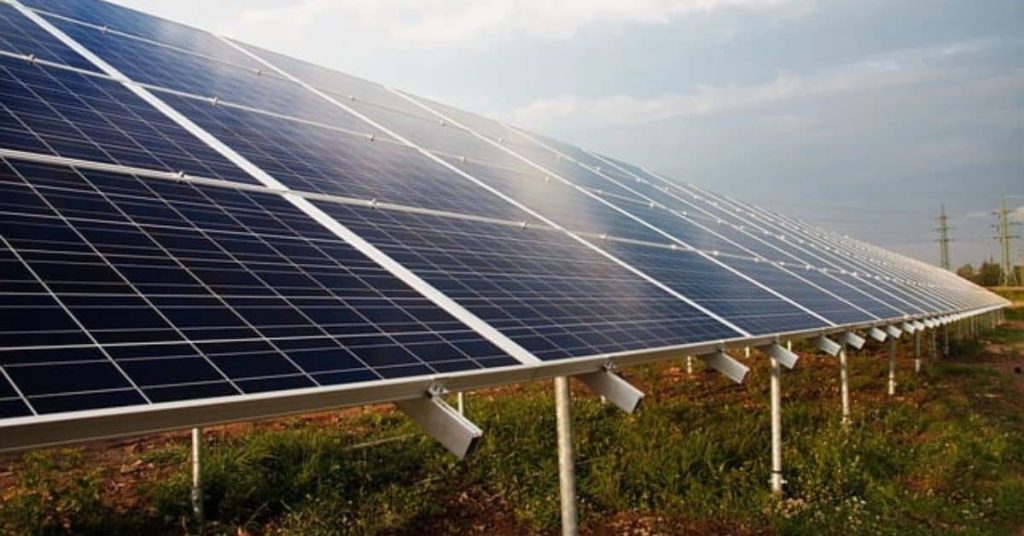
One of the most exciting aspects of homesteading in Idaho is the chance to live off-grid — not just as a romantic idea, but as a practical and sustainable lifestyle. With its wide-open spaces, abundant sun, mountain winds, and rushing streams, Idaho offers incredible natural resources for self-reliant living. Whether you’re aiming to unplug completely or just supplement your utilities, energy independence is within reach if you plan wisely.
Solar, Wind, and Hydropower Systems
Idaho’s varied landscapes mean you can tailor your renewable energy setup to your property’s strengths.
- Solar power: Southern Idaho, in particular, offers high solar potential. Rooftop or ground-mounted panels can meet most, if not all, of your household needs when paired with a reliable battery system.
- Wind energy: Many parts of Idaho, especially open plains and ridgelines, have steady winds suitable for small-scale wind turbines. It’s a great option to combine with solar to balance sunny days and windy nights.
- Micro-hydropower: If you’re lucky enough to have a year-round creek or irrigation ditch on your property, a small hydropower system can provide a consistent, low-maintenance energy source — sometimes even better than solar or wind.
Personal insight: Start by tracking your home’s energy needs with a usage monitor. Knowing exactly how much power you consume helps you size your system accurately and avoid overspending.
Renewable Energy Grants and Tax Credits
Setting up renewable systems isn’t cheap — but Idaho and federal programs can help lighten the load.
- Federal incentives: The federal solar tax credit currently covers a percentage of your solar installation cost (consult an accountant or energy contractor for the latest rate).
- Idaho state programs: While Idaho doesn’t offer as many incentives as some states, it does provide property tax exemptions for certain renewable energy systems.
- Rural development grants: The USDA’s Rural Energy for America Program (REAP) offers grants and loans to agricultural producers and rural small businesses, which may apply if you plan to sell farm products.
Pro tip: Contact the Idaho Office of Energy and Mineral Resources or your local utility co-op to explore available rebates or cost-share programs. Many Idaho co-ops have incentives for solar buy-back or grid-tied systems.
Off-Grid Internet, Communication, and Remote Work Strategies
One often-overlooked challenge of off-grid homesteading is staying connected to the outside world.
- Internet access: Starlink satellite internet has become a game changer for rural Idaho, offering fast and reliable service even in remote areas. Fixed wireless and cellular hotspots are other options, depending on your location.
- Phone service: Consider a cell booster if your signal is weak or look into VoIP (Voice over Internet Protocol) options if you have decent internet but poor cell coverage.
- Remote work: More homesteaders are financing their lifestyle through remote jobs. If you plan to work online, prioritize a stable internet setup and a dedicated workspace where you can focus.
Practical tip: Test your internet and phone options before fully committing to an off-grid site. Talk to neighbors, check coverage maps, and budget for any necessary equipment upgrades.
Practical Skills and Daily Life
Homesteading in Idaho isn’t just about growing food or raising animals — it’s about creating a lifestyle that weaves together resilience, creativity, and family life. For many, the heart of the homestead is the daily rhythm of practical skills and meaningful work that connects them to the land, each other, and their goals of self-sufficiency.
Homeschooling and Family Life on a Homestead

For homesteading families, homeschooling can feel like a natural extension of the lifestyle. Idaho is one of the most homeschool-friendly states in the country, with few restrictions and a supportive network of families.
- Hands-on learning: The homestead itself becomes a classroom, where kids learn math through garden planning, biology through animal care, and responsibility through daily chores.
- Balance is key: It’s important to carve out structured time for formal academics, especially for core subjects like reading and math, while also giving space for the incredible lessons the land provides.
- Community matters: Homeschool co-ops, 4-H clubs, and local libraries can provide a social outlet for both parents and kids, helping avoid isolation.
Personal insight: Many Idaho homesteaders say their children thrive on the real-world education homesteading offers, developing independence and problem-solving skills far beyond their years.
Food Preservation: Canning, Drying, Freezing
A big part of the homesteading payoff comes at harvest time — but to truly stretch the value of your garden or orchard, you’ll need good preservation skills.
- Canning: Whether it’s tomatoes, peaches, or green beans, canning is a time-honored Idaho tradition. A reliable pressure canner is essential for meats and low-acid foods, while water bath canning works for fruits, jams, and pickles.
- Drying: Herbs, fruits, and even meats (like jerky) can be dried with a dehydrator or, in Idaho’s dry summer air, sometimes just using the sun.
- Freezing: For quick preservation, freezing is your friend. But keep in mind that off-grid homesteaders may need a solar-powered freezer or a root cellar backup.
Practical tip: Start small — maybe one or two crops your family loves — and build up your preservation pantry over time. Don’t try to master everything your first year.
DIY Projects, Repairs, and Skills
One thing is certain: homesteading in Idaho will test your resourcefulness. You’ll likely end up wearing the hats of carpenter, mechanic, gardener, and veterinarian all in one day.
- Basic repairs: Knowing how to fix a fence, patch a roof, or repair a chicken coop will save you time and money.
- Woodworking and metalwork: From building raised beds to repairing tools, these skills are invaluable on a homestead.
- Animal care: Learn basic animal husbandry — how to spot illness, assist with births, or administer medications.
Personal reflection: Many homesteaders will tell you they didn’t start out as experts. It’s okay to learn as you go — YouTube, neighbors, and local extension offices are incredible resources. Over time, the confidence you gain from solving problems yourself is one of the most satisfying parts of homesteading life.
Managing Challenges on an Idaho Homestead

While homesteading in Idaho offers incredible rewards, it also comes with its share of challenges. From curious wildlife to unpredictable weather, and the realities of living far from town, every homesteader learns to adapt. Facing these hurdles with preparation, flexibility, and a sense of humor can make all the difference.
Wildlife and Pest Management
Idaho’s stunning landscapes are home to deer, elk, moose, bears — and plenty of smaller critters like raccoons, gophers, and voles. While watching wildlife can be magical, protecting your garden and livestock is essential.
- Fencing matters: Invest in good perimeter fencing to keep out large animals. For smaller pests, raised beds and hardware cloth can help.
- Chicken and livestock safety: Secure coops with latches that raccoons can’t open, and use motion-activated lights near barns to deter nighttime visitors.
- Natural deterrents: Consider companion planting, homemade sprays, or using guardian animals like dogs or geese to help control pests.
Personal insight: Many Idaho homesteaders find that a respectful coexistence mindset works best — the goal isn’t to eliminate wildlife, but to build a system where crops, animals, and nature can live side by side.
Preparing for Extreme Weather (Snow, Drought, Wildfires)
Idaho’s climate ranges from snowy mountains to semi-arid plains — and every region brings its own weather risks.
- Snow and cold: Stockpile firewood early, insulate water lines, and create windbreaks with trees or fencing. Keep a backup heat source, like a wood stove, in case of power outages.
- Drought: Practice water conservation with drip irrigation, mulch, and drought-tolerant crops. A backup water source, such as rain catchment or a well, can be a lifesaver.
- Wildfires: Clear brush and dry debris near buildings, create defensible space around your home, and have an evacuation plan ready.
Practical tip: Watch local weather alerts closely, and connect with neighbors — they’re often your best source of region-specific advice on what to expect and how to prepare.
Navigating Supply Shortages and Rural Access to Goods
Living on a homestead often means being far from big box stores or reliable delivery routes. Being resourceful and proactive helps you avoid frustration.
- Bulk buying: Stock up on essentials like animal feed, hardware, and pantry staples when you’re in town.
- Local networks: Build relationships with nearby farmers, co-ops, or trading groups. You may be able to swap eggs for hay or split bulk orders.
- Self-reliance: Develop skills to make or repair things yourself — from sewing to welding — which reduces your dependence on outside goods.
Personal reflection: Many Idaho homesteaders say that rural living has taught them patience and creativity. Instead of a trip to the hardware store, they’ll think, What can I repurpose? or Can I wait until next town day? Over time, these small adaptations become second nature — and part of the joy of homesteading.
Designing for Sustainability

Sustainability isn’t just a buzzword on an Idaho homestead — it’s a guiding principle that shapes how you manage your land, water, and resources for the long haul. By working with nature instead of against it, you can create a more resilient, productive homestead that serves your family and the land for years to come.
Integrating Permaculture Principles
Permaculture is all about creating systems that mimic the natural world to meet human needs in a regenerative way. On an Idaho homestead, this means designing your layout and routines so every element supports the others.
- Diverse plantings: Incorporate a mix of fruit trees, perennial vegetables, herbs, and annual crops. Diversity reduces pests and disease while boosting yields.
- Zones and placement: Place high-use areas (like your kitchen garden or chicken coop) close to the house, while orchards and pastures can go farther out. This saves time and energy.
- Natural cycles: Compost your food scraps and animal bedding to build healthy soil. Use chickens to till garden beds or goats to clear brush.
Personal tip: Many Idaho homesteaders start small with permaculture — maybe adding a few nitrogen-fixing plants to the garden or setting up a composting system — and expand as they gain experience. It’s less overwhelming and allows you to observe what works on your land.
Water Management and Drought-Resistant Practices
Idaho’s water picture can be unpredictable, with snowmelt-fed rivers in the mountains and semi-arid conditions in the south. Smart water use is critical.
- Rainwater catchment: Install gutters and barrels to collect rainwater for garden use. Even a few barrels can make a difference during dry spells.
- Swales and berms: Shape the land to slow and capture runoff. This recharges groundwater and reduces erosion.
- Mulching: A thick layer of organic mulch helps retain soil moisture, suppress weeds, and improve soil health over time.
- Drought-tolerant crops: Look for hardy varieties suited to Idaho’s conditions, like dryland grains, native herbs, or hardy perennials.
Personal reflection: One Idaho homesteader I spoke with shared that after installing swales and switching to more drought-hardy crops, they cut their water usage in half — and their garden thrived even through a dry summer. It’s proof that thoughtful design pays off in resilience and peace of mind.
Legal Considerations for Selling Products
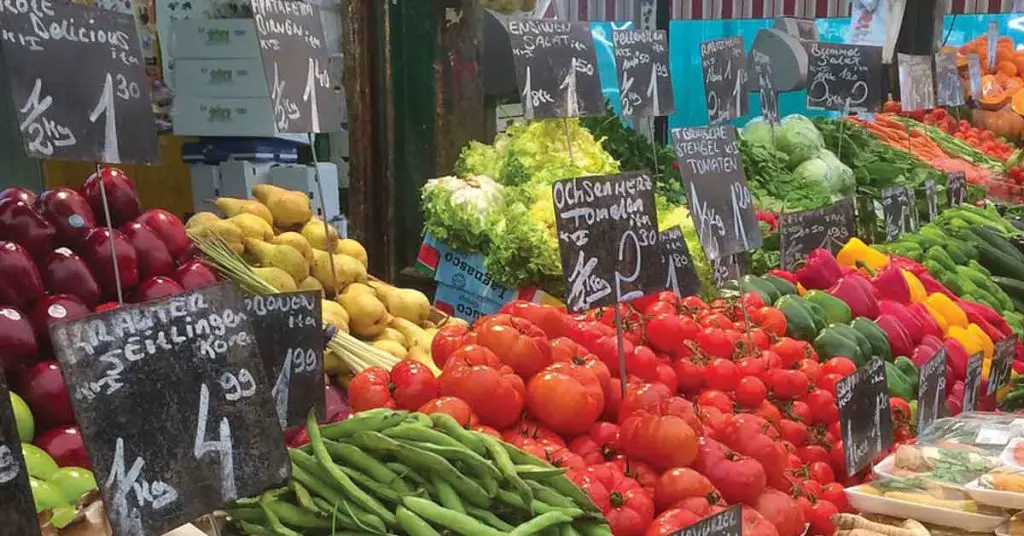
One of the most exciting parts of homesteading in Idaho is turning your hard work into a small business — whether that’s selling eggs, honey, baked goods, or handmade crafts. But before you set up a table at the local farmers’ market or launch an online shop, it’s essential to understand the legal landscape. Doing things by the book not only builds trust with your customers but also helps you avoid fines or setbacks down the road.
Idaho Cottage Food Laws
Idaho is generally friendly to small-scale food producers, thanks to its cottage food laws. These allow homesteaders to make and sell certain low-risk foods from their home kitchens without needing a commercial license or inspection.
Some popular cottage foods you can legally sell in Idaho include:
- Baked goods (like bread, cookies, and cakes)
- Jams and jellies
- Honey and syrup
- Dry herbs and spice mixes
- Candies and fudge
Important tips:
- You must label your products with the producer’s name and address, product name, and a statement that the product was made in a home kitchen not inspected by the state.
- Keep records of your ingredients and sales, as some farmers’ markets or event organizers may ask for this.
Personal insight: Many Idaho homesteaders start with a few simple offerings — like homemade jams or sourdough bread — and gradually expand their lineup as they learn what sells and what their community wants. Start small to stay within the rules and build a loyal customer base.
Selling at Farmers’ Markets and Online
Selling at farmers’ markets can be a wonderful way to connect with your local community and test your products.
Things to consider:
- Check with the market manager about booth fees, insurance requirements, and whether you need a temporary vendor permit.
- Some markets require you to carry liability insurance, especially if you’re selling perishable goods.
- Be prepared to explain your growing practices or recipes to curious customers — transparency builds trust!
If you’re looking to expand beyond local markets, selling online through platforms like Etsy, Facebook Marketplace, or your own website is an option. Keep in mind:
- You may need a state sales tax permit, depending on how much you sell.
- Shipping perishable items can get tricky — start with shelf-stable products like soap, beeswax candles, or dried herbs.
Personal tip: A neighbor of mine in Idaho turned a simple honey stand into a thriving online business by focusing on local branding and partnering with nearby shops. It’s a great reminder that small beginnings can lead to big opportunities — especially when you have the right legal foundation.
Generating Extra Income From Your Homestead

For many folks embracing homesteading in Idaho, making the homestead financially self-sustaining is part of the dream. While raising your own food and living off the land can save money, adding some extra income streams can make the difference between just “getting by” and thriving. Luckily, Idaho’s growing interest in local food, outdoor experiences, and traditional skills creates plenty of opportunities for enterprising homesteaders.
Agritourism and Hosting Farm Stays
Agritourism is a fast-growing niche that invites visitors to experience life on the farm. In Idaho, where people love the outdoors and are curious about rural living, offering a farm stay can be surprisingly rewarding.
Consider:
- Airbnb or Hipcamp stays: Set up a glamping tent, tiny cabin, or guest room and offer visitors a taste of off-grid or country life.
- Pick-your-own experiences: Invite families to pick berries, flowers, or pumpkins during the right season.
- Animal experiences: Let visitors help with farm chores or interact with chickens, goats, or horses — a hit with kids.
Personal insight: A homesteading friend of mine near Sandpoint started offering goat yoga and weekend farm stays, and they now have regular bookings throughout the summer. The key is to highlight what makes your place special — whether it’s the mountain views, the heirloom garden, or the friendly animals.
Workshops, Tours, and Online Courses
If you’ve been homesteading for a while, chances are you’ve built up skills that others are eager to learn. Teaching workshops or offering tours can turn your hard-won knowledge into meaningful income — and it’s incredibly rewarding to help others start their own journey.
Ideas to explore:
- In-person workshops: Canning, breadmaking, soapmaking, gardening, or seed-saving.
- Homestead tours: Walk people through your garden, orchard, or barn, explaining how you set it up and what you’ve learned.
- Online classes or YouTube tutorials: Teach niche skills like cheesemaking, beekeeping, or building raised beds — and reach a global audience.
Tip: Start small. Offer a backyard tour to neighbors or friends, test out a short class, and gather feedback before scaling up. Many successful homesteaders in Idaho started this way and grew their reputation through word of mouth.
Community Connections and Support

One of the most uplifting aspects of homesteading in Idaho is the sense of community that often comes with it. While the dream of self-sufficiency can sometimes feel like a solo path, no one truly goes it alone — and in Idaho, you’ll find a wealth of like-minded folks eager to share knowledge, resources, and encouragement. Building strong local connections not only enriches your homestead journey but can also save you time, money, and a lot of trial-and-error.
Finding Local Gardening and Homesteading Groups
Idaho’s homesteading community is surprisingly active and welcoming. Across the state — from the fertile Treasure Valley to the rugged Panhandle — you can tap into gardening clubs, permaculture groups, and homesteading meetups.
Where to start:
- Check out local extension offices and Master Gardener programs, which often host free or low-cost workshops.
- Look on Facebook or Meetup for Idaho-based homesteading groups or neighborhood gardening circles.
- Visit farmers’ markets and introduce yourself — vendors and shoppers alike often have valuable local insights.
Personal insight: I’ve met some of my best homesteading mentors not online, but standing in line for tomato starts at a spring plant sale. Don’t underestimate the power of striking up a conversation!
Seed Swaps and Resource Sharing
Seed swaps are a time-honored tradition among homesteaders, and Idaho hosts many of these community-building events each year. They’re a fantastic way to:
- Access heirloom or regionally adapted seeds.
- Share surplus starts, tools, or even livestock.
- Build relationships with local growers who understand Idaho’s unique climate challenges.
If no formal swap exists in your area, consider organizing one — even a small gathering of neighbors exchanging seeds over coffee can become an annual tradition that strengthens your local network.
Participating in State Fairs, Events, and Online Trends
Idaho’s state and county fairs are more than just summer entertainment — they’re prime opportunities for homesteaders to showcase their goods, test their skills in competitions, and meet others with shared passions. From blue-ribbon pies and giant pumpkins to livestock shows, these events can boost your confidence and connect you with buyers or collaborators.
Online, trends like sharing homestead updates on Instagram, YouTube, or Reddit (like in r/Idaho) have created a new layer of support and inspiration. Whether you’re looking for how-to videos on beekeeping or sharing your own chicken coop build, social platforms can help you feel part of a bigger movement — even on the most remote backroad.
Resources and Expert Tools

No matter where you are on your homesteading in Idaho journey — dreaming, starting, or improving — the right resources can save you time, money, and frustration. Idaho offers an impressive network of expert tools, educational services, and community resources to help you succeed, whether you’re growing vegetables, raising livestock, or managing forestland.
USDA and Idaho Extension Services
The USDA and Idaho Extension Service are among the most valuable starting points for Idaho homesteaders.
- Idaho Extension Service: Run through the University of Idaho, this program offers free or low-cost workshops, soil testing, master gardener training, pest management advice, and small-scale farming resources tailored to Idaho’s diverse climates.
- USDA: The USDA provides tools like the Plant Hardiness Zone Map, conservation program information, farm loans, and technical assistance to homesteaders of all sizes.
Pro tip: Check your local extension office’s calendar — they often host hands-on workshops that can connect you with local experts and fellow homesteaders.
Online Communities and Recommended Reading
Online communities can offer real-time advice and moral support.
- Reddit forums like r/Idaho and r/homestead often have threads on regional tips, from irrigation tricks to chicken breeds that handle Idaho winters well.
- Facebook groups focused on Idaho homesteading and gardening are great for finding local plant sales, secondhand tools, and neighborly advice.
- Recommended reading: Books like The Resilient Gardener by Carol Deppe and Gaia’s Garden by Toby Hemenway offer timeless, practical guidance. Consider subscribing to Idaho-specific blogs or YouTube channels that document seasonal challenges and wins.
Idaho Farm Bureau and Farmland Preservation
The Idaho Farm Bureau is a trusted resource for homesteaders looking for legal updates, water rights guidance, insurance, and farm advocacy. They also provide networking events and local policy updates that can impact small-scale producers.
For those worried about land access and protection, Idaho’s farmland preservation programs aim to protect agricultural lands from urban development, ensuring your hard-earned homestead has a secure future.
Conclusion: Your Next Steps Toward Homesteading in Idaho
Choosing the path of homesteading in Idaho is about more than land ownership — it’s about reclaiming self-sufficiency, connecting with nature, and living with purpose in one of the most naturally rich and agriculturally diverse states in the country.
Key Takeaways
Whether you’re drawn to the low cost of living, fertile valleys, or abundance of natural resources, Idaho offers an ideal environment for building a sustainable lifestyle. From understanding homesteading laws and finding the right land to raising livestock, preserving food, and tapping into local support systems, the opportunities are as vast as the landscape itself.
Start Small and Grow Confidently
You don’t have to have it all figured out on day one. Start with a garden bed. Raise a few chickens. Attend a workshop at your local extension office. Homesteading isn’t about perfection—it’s about learning, adapting, and building a life that reflects your values. Each season will teach you something new, and each small step will take you closer to long-term self-sufficiency.
Share Your Idaho Homesteading Journey with Us
We’d love to hear from you—whether you’re planting your first tomato or building a fully off-grid retreat. Share your photos, tips, lessons, and stories in the comments or on social media using #HomesteadingInIdaho. Your experience could inspire the next family to take that first step into a simpler, more intentional way of life.
Disclaimer: The information provided in this article is for general informational purposes only and is not intended to be a substitute for professional advice. The author of this article does not claim to be an expert in homesteading and the information provided should not be relied upon to make decisions about your own homesteading journey. Please do your own research and consult with a qualified professional before making any decisions about your homestead.
Share via:
Shaun Alexander is the main writer and editor for HomesteadingSimple.com. With a strong passion for homesteading and sustainability, Shaun has dedicated his life to learning and sharing information about a simple, fulfilling existence tied to the land. His expertise ranges from gardening and livestock management to off-grid living and DIY projects, reflecting the diverse skills necessary for a successful homesteading lifestyle. Shaun’s goal is to inspire and educate others about the possibilities of homesteading, whether in rural, suburban, or urban settings, and to provide practical advice and tips for both beginners and seasoned homesteaders. He believes in a future where more people return to their roots, embracing a life of self-sufficiency and harmony with nature.

